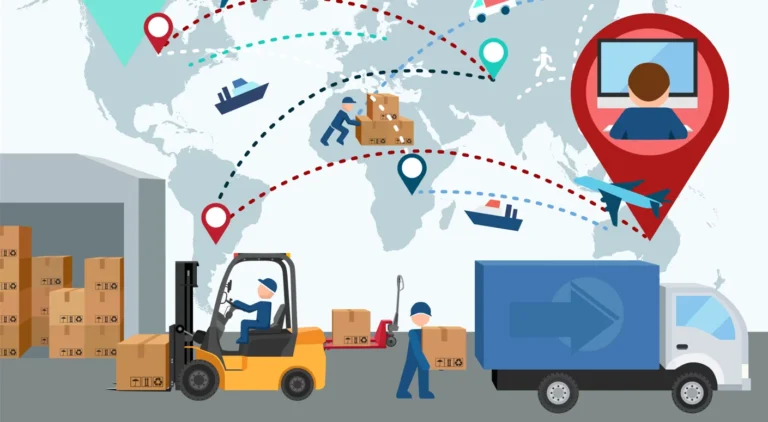When it comes to managing a logistics operation, costs can quickly spiral out of control. But what if you could tackle those sneaky, hidden expenses that seem to eat into your bottom line without warning? That’s where a Transport Management System (TMS) comes into play.
If your business handles shipping, distribution, or freight, you’re probably already juggling tight deadlines, fluctuating fuel costs, and complex supply chains. Yet many businesses overlook the subtle, often untracked costs that can quietly stack up. A TMS doesn’t just streamline logistics—it eliminates these hidden drains on your resources.
1. Manual Processing Errors
Do you still handle things like shipping labels, invoices, or tracking manually? If so, you’re risking costly errors. A simple typo in an address or an incorrect shipment weight can lead to delivery failures, penalties, or unhappy customers. Not to mention the time spent fixing these mistakes.
A transport management system USA automates these tasks, ensuring accuracy in everything from route planning to invoicing. By removing the human error factor, you avoid unnecessary fees and time spent correcting mistakes.
2. Inefficient Route Planning
Fuel is one of the largest expenses in transportation, and taking inefficient routes can easily inflate your costs. Are your drivers spending extra time on the road or making unnecessary stops?
A TMS uses advanced algorithms and real-time traffic updates to create optimized routes for your shipments. This reduces fuel consumption, vehicle wear and tear, and even labor costs by minimizing hours on the clock.
3. Missed Delivery Windows
Late deliveries are more than just a bad look for your business—they often come with financial penalties or strained relationships with key customers.
With a TMS, you gain real-time tracking and alerts, so you can monitor shipments and respond immediately to any delays. Proactively managing schedules ensures you meet delivery windows and keep your clients happy.
4. Excessive Inventory Costs
Holding too much inventory because of poor transportation planning ties up cash flow and adds storage costs. On the flip side, insufficient inventory due to delays can disrupt operations and lead to lost sales.
A TMS provides visibility into your supply chain, allowing you to fine-tune inventory levels. With improved shipment timing, you avoid both overstocking and stockouts.
5. Overpaying for Freight
Negotiating competitive freight rates is tough when you don’t have clear insights into your shipping data. Are you paying too much for certain carriers or routes simply because you don’t have the time to analyze the numbers?
A TMS aggregates and analyzes historical shipping data, empowering you to negotiate better rates with carriers. Plus, many systems integrate with multiple carriers, so you can compare options and choose the most cost-effective solution for each shipment.
6. Idle Driver Time
Do your drivers spend time waiting for loads, sitting in traffic, or dealing with unclear instructions? That idle time is costing you money.
A TMS streamlines communication between dispatchers and drivers, providing clear schedules and updates. Drivers spend less time waiting and more time moving, boosting productivity and cutting labor costs.
7. Administrative Overload
If your team is overwhelmed with paperwork, from carrier contracts to shipment reports, you’re burning valuable hours on tasks that could be automated.
A TMS simplifies the process by digitizing and centralizing documents, eliminating the need for stacks of paperwork. This frees up your staff to focus on higher-priority tasks, increasing overall efficiency.
8. Poor Customer Satisfaction
Losing customers because of poor service is one of the most expensive mistakes a business can make. Whether it’s frequent delays, lack of communication, or misplaced shipments, dissatisfied clients often lead to lost revenue.
By improving tracking, communication, and on-time delivery rates, a TMS ensures seamless customer experiences. Happy customers are more likely to stick around—and to recommend your services to others.
9. Compliance Penalties
Are you confident your operations meet industry regulations? Failing to comply with standards for driver hours, vehicle maintenance, or documentation can result in fines or legal issues.
A TMS helps you stay compliant by tracking regulations and sending alerts for necessary actions, like maintenance schedules or driver certifications. Staying ahead of these requirements prevents costly penalties.
10. Lack of Performance Insights
Without proper data, it’s nearly impossible to pinpoint where inefficiencies are occurring. Are your carriers underperforming? Are certain routes draining your budget?
A TMS provides detailed analytics and reports, giving you real-time insights into your operations. With clear data, you can identify bottlenecks, adjust strategies, and continuously improve performance—saving money over time.
The Bigger Picture
It’s not just about cutting costs—it’s about creating a more streamlined, scalable, and profitable operation. With a TMS, you’re not just solving individual problems; you’re building a foundation for long-term success.
Hidden costs can drain your resources faster than you realize. But with the right tools in place, you can take control, reduce waste, and focus on growing your business. So, what’s holding you back from making the leap to a Transport Management System? It might just be the smartest investment your business makes this year.
